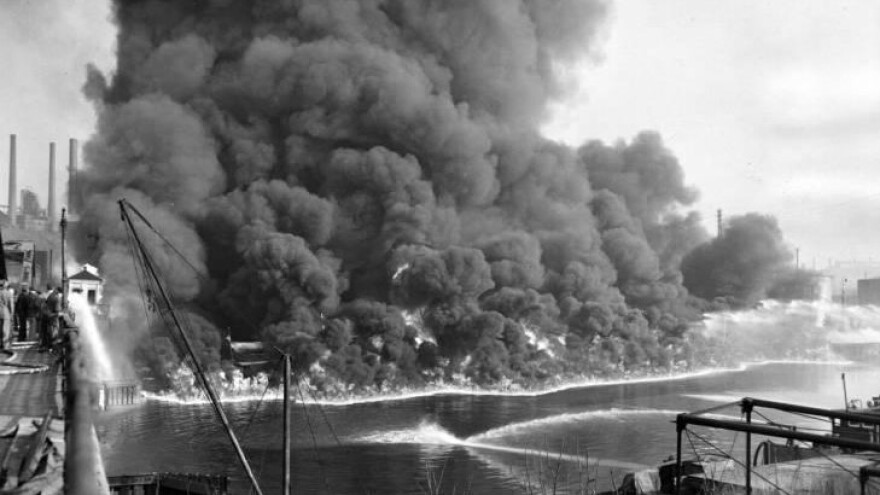Water isn’t supposed to burn.
The burning river showed us otherwise.
See all of WKSU'S Watershed stories here.
The truly sad thing is that 50 years ago when the Cuyahoga River burned, that fact was old news, at least, it was for many people in Northeast Ohio. On June 22, 1969, when the river caught on fire, it wasn’t the first time. The Cuyahoga, heavy with industrial pollutants and spilled oil, had periodically burned. In fact, this particular fire may have become a dubious, but unremarkable point in the decline and potential death of the river, had it not been for something that happened more than a month later.

Time Magazine reported on the fire in the August 1st, 1969 edition. It was not the cover story; that was about Sen. Ted Kennedy’s accident on Chappaquiddick Island. But the issue did include a story about American rivers which it said “serve as convenient, free sewers.” It included a photo of the river burning but not of the June 22nd fire, rather a blaze from 17 years earlier. (There is no known photo of the 1969 fire, only of the aftermath.)
That article did help spark an environmental movement, which over the past 50 years has brought the Cuyahoga back from the brink.
Our watershed
The restoration of the Cuyahoga and the area’s other waterways are thanks to decades of federal and state environmental protections and individuals who worked hard to restore the fallen glory of our waters. We are a couple of generations removed from those bad old days when our rivers were our common dumping ground, where industry pumped its pollution and communities literally flushed their sewage. Gone are the dumps that dotted the Cuyahoga and other waterways. Our rivers and Lake Erie are improved, and we are reconnecting with our waterways.
But there’s still work to be done. While there are still some vestiges of our industrial past, one of the biggest remaining challenges remains the reduction, if not the outright elimination, of combined sewer overflows (CSO’s), which still allow raw sewage to flow directly into the Cuyahoga.
The work ahead of us
In telling the story of the 50th anniversary of the burning river, we felt it was important not to dwell on the well-documented history of the fire but to look at the current state of the Cuyahoga as well as other waters in Northeast Ohio which share a similar environmental legacy. Over the next two months, we’ll look at the Cuyahoga, the Black and the Ashtabula Rivers as well as the current conditions and challenges facing Lake Erie, the body of water they all empty into. The recovery of the Cuyahoga has lead to competing demands for its use; the question is: can commerce and recreation easily co-exist?
All because of a photo
The photo that appeared in that 1969 article in Time Magazine helped to spark a movement. Photography is one artistic medium, and most of the time, art is a reaction, a response to an event. In this instance, this photo, this piece of art, helped to prompt action in the form of an environmental movement. We’ll take a closer look at the original photo and the inspiration photographers today get from it, the actual fire and from the river.
A watershed moment

We are at a watershed moment in the environmental movement in Northeast Ohio when it comes to the stewardship of our waterways. Many of those who witnessed the burning river are gone as are many who fought to save the Cuyahoga afterwards.
But there are many who’ve taken up the cause and are seeing success in the growth of the so-called “Blue Economy,” jobs that relate to water and local waterways. A report from NASA Glenn Research Center found that Blue Economy jobs in recent years outpaced growth in advanced manufacturing, additive manufacturing and biotech combined.
50 years later, it’s easy to take for granted that the most serious problems have been addressed and that our work is done. But efforts must continue to ensure our most precious resource is getting the appropriate protection that will ensure its health for generations to come.



